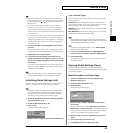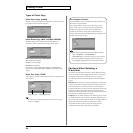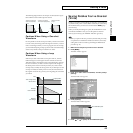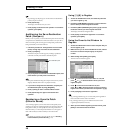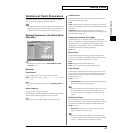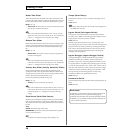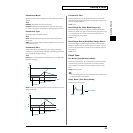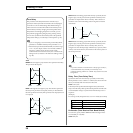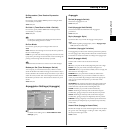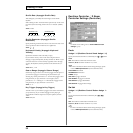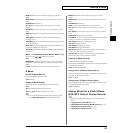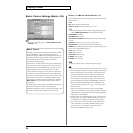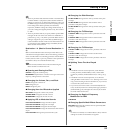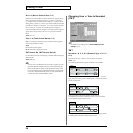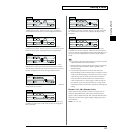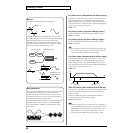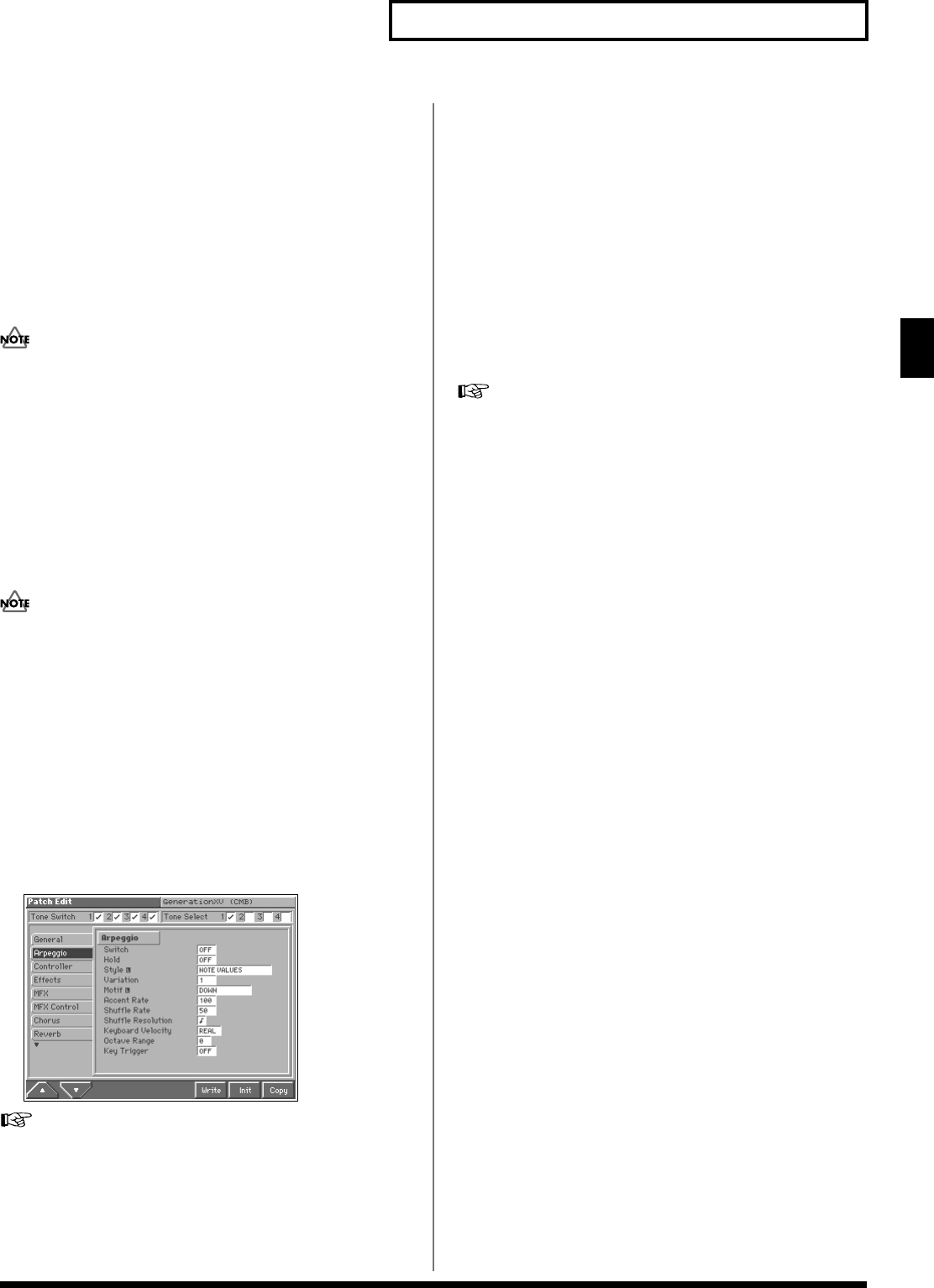
51
Creating a Patch
Creating a Patch
Rx Expression (Tone Receive Expression
Switch)
For each tone, specify whether MIDI Expression messages will be
received (ON), or not (OFF).
Value: OFF, ON
Rx Hold-1 (Tone Receive Hold-1 Switch)
For each tone, specify whether MIDI Hold-1 messages will be
received (ON), or not (OFF).
Value: OFF, ON
If “NO SUS” is selected for Env Mode parameter (PATCH/
General), this setting will have no effect.
Rx Pan Mode
For each tone, specify how pan messages will be received.
Value
CONT: Whenever Pan messages are received, the stereo position of
the tone will be changed.
K-ON: The pan of the tone will be changed only when the next note
is played. If a pan message is received while a note is sounding, the
panning will not change until the next key is pressed.
The channels cannot be set so as not to receive Pan messages.
Redamper Sw (Tone Redamper Switch)
You can specify, on an individual tone basis, whether or not the
sound will be held when a Hold 1 message is received after a key is
released, but before the sound has decayed to silence. If you want to
sustain the sound, set this “ON.” When using this function, also set
the Rx Hold-1 parameter “ON.” This function is effective for piano
sounds.
Value: OFF, ON
Arpeggiator Settings (Arpeggio)
fig.03-11_50
For details on the setting, refer to “How to Make the Patch
Settings” (p. 42).
Arpeggio
Switch (Arpeggio Switch)
Switches the Arpeggiator on/off.
Value: OFF, ON
Hold (Arpeggio Hold Switch)
Switch between Hold On/Hold Off for the Arpeggiator
performance.
Value: OFF, ON
Style (Arpeggio Style)
Specifies the basic way in which the arpeggio will be played.
For details regarding Arpeggio Style, refer to “Arpeggio Style
List” (Sound/Parameter List).
Variation (Arpeggio Variation)
The arpeggiator provides several variations (performance patterns)
for each arpeggio style. This parameter selects the variation number.
The number of variations will differ according to the arpeggio style.
Motif (Arpeggio Motif)
Sets the order in which notes of the chord will sound.
Value
UP: Notes you press will be sounded, beginning from low to high.
DOWN: Notes you press will be sounded, from high to low.
UP&DOWN: Notes you press will be sounded, from low to high, and
then back down from high to low.
RANDOM: Notes you press will be sounded, in random order.
NOTE ORDER: Notes you press will be sounded in the order in
which you pressed them. By pressing the notes in the appropriate
order you can produce melody lines. Up to 128 notes will be
remembered.
GLISSANDO: Each chromatic step between the highest and lowest
notes you press will sound in succession, repeating upward and
downward. Press only the lowest and the highest notes.
CHORD: All notes you press will sound simultaneously.
AUTO1: The timing at which keys will sound will be assigned
automatically, giving priority to the lowest key that was pressed.
AUTO2: The timing at which keys will sound will be assigned
automatically, giving priority to the highest key that was pressed.
PHRASE: Pressing a single key will sound the phrase based on the
pitch of that key. If multiple keys are pressed, the last-pressed key
will be valid.
Accent Rate (Arpeggio Accent Rate)
Modifies the strength of accents and the length of the notes to adjust
the “groove” feel of the arpeggio. A setting of “100%” will produce
the most pronounced groove feel.
Value: 0–100%



